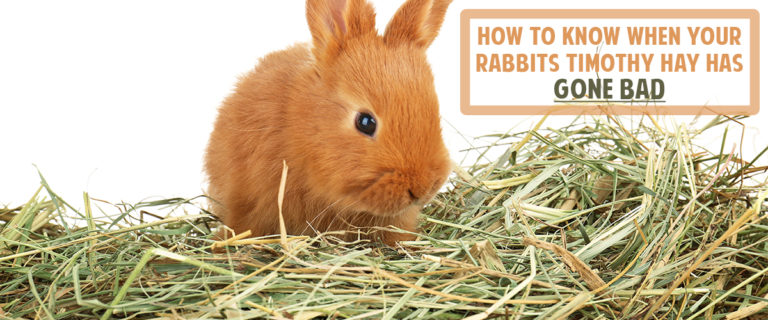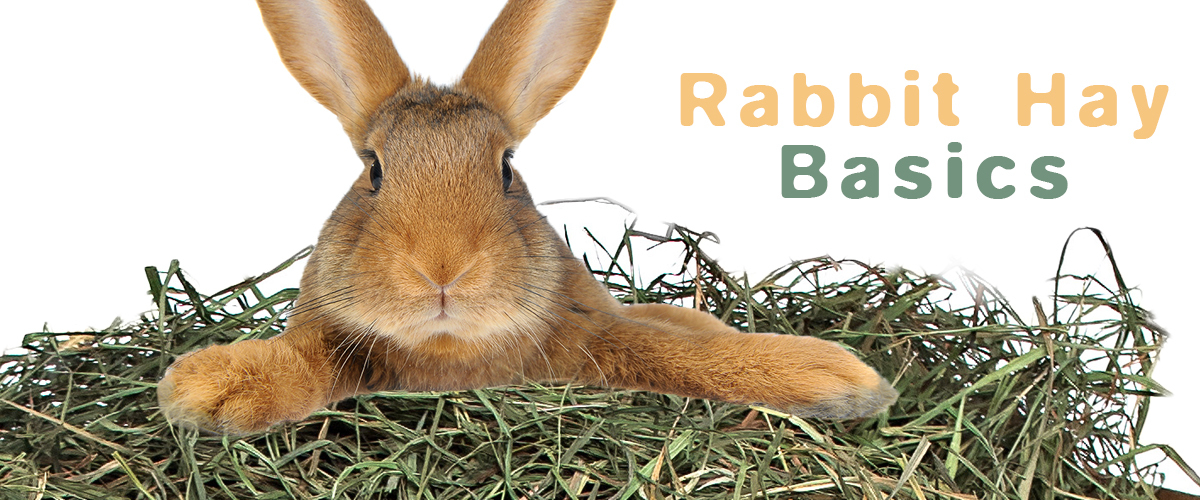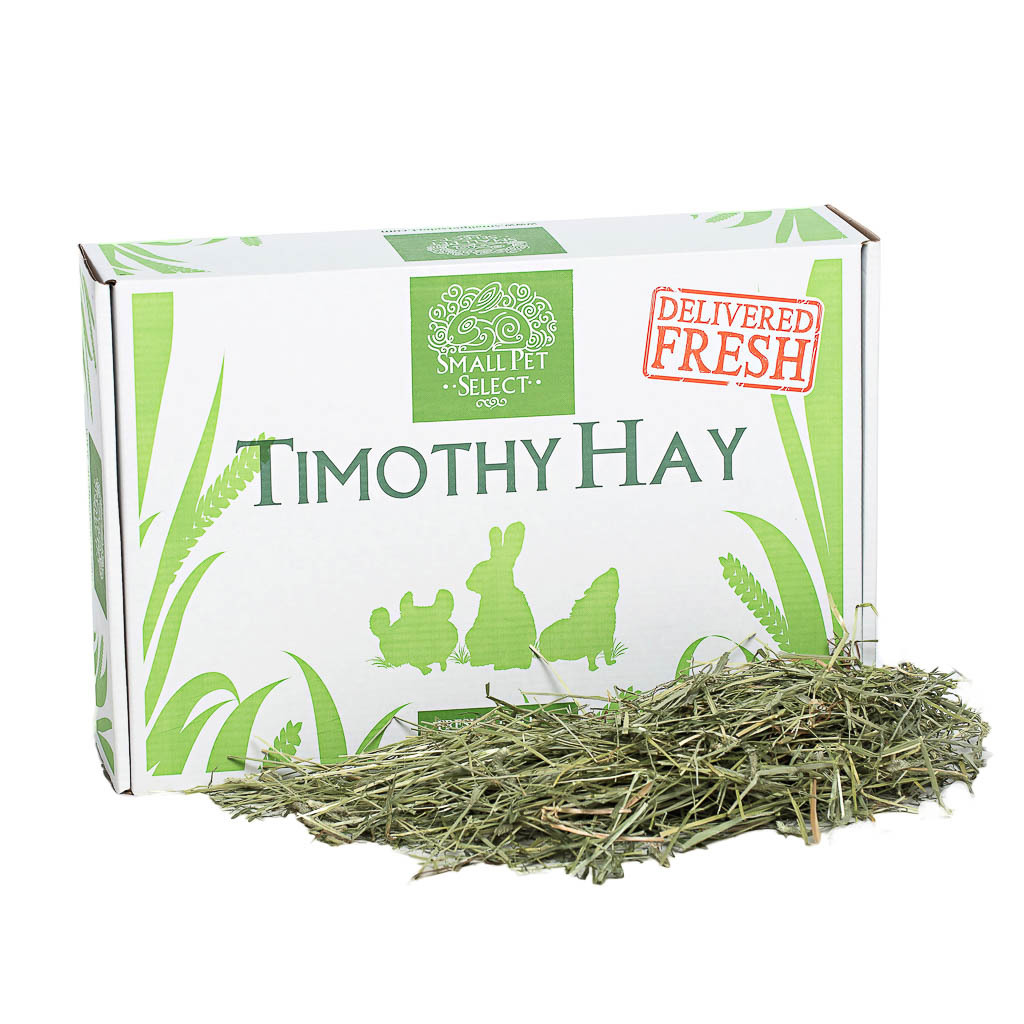Hay can go bad. It’s unfortunate, but it’s a fact. Even though it’s obviously dry, you always want to make sure it’s fresh Timothy hay. So how can you tell if your bun’s hay has gone bad? What do you do with “bad” hay? And how do you store it to make sure it lasts as long as possible for your rabbit?
Signs That Your Timothy Hay has Gone Bad
When you receive hay, it should be fragrant, fresh, green, and full of nutrients. 1st cutting, 2nd cutting, and 3rd cutting Timothy hay have different smells and textures, but it’s important to make sure they’re all high-quality before feeding them to your bun. You know it’s good when your bun is binkying all over the house just waiting patiently for it.



But, what if your rabbit’s hay isn’t so fresh? If you buy your hay from a big box pet store or eCommerce site, you might be surprised to open a box of hay and see dry, brown, brittle Timothy hay. While brown hay doesn’t necessarily mean your rabbit’s hay is bad, the dried up stuff doesn’t have as many nutrients. But, if the hay has a funky smell to it or you can see visible signs of age or mold, don’t feed it to your bunny. Signs of bad hay:
- A bad smell
- Brown and brittle
- Visible mold
- A bun who turns their nose up at their favorite cutting
When in Doubt, Throw it Out
Bunnies have sensitive tummies and the last thing you’d want to do is feed them bad Timothy hay and upset their delicate digestion system.
What To Do With The Old Stuff
If you just bought a bunch of hay and notice it has gone bad, don’t fear. There are still some things you can do with it so you don’t feel like it’s a complete waste. As long as there isn’t actual mold on the hay, you can use it for your bun’s litter box, as bedding, or even as a toy. Dry, brittle hay is still great for gnawing on and as we know, bunnies love their toys. Make your own game by stringing the old hay in and out of the bars of your bun’s cage. They’ll enjoy the enrichment and while the hay might not be the freshest, it’s better than the icky, dyed, artificial toys that many pet stores carry.
Storing Your Hay
Storing your hay the right way can help make it last longer and stay fresher and full of nutrients for your little guy or gal. There are many easy (and even cute) ways to store your Timothy hay. But first, let’s talk about what NOT to do when storing your hay:
- Hay will last longer when it’s stored in the dark away from any sunlight.
can cause damage and make it that yucky brown color.
- Make sure you store your hay in a nice, dry space. Any moisture can cause mold, which is a big no-no.
- Make sure that wherever you store has good ventilation. A stuffy room with little to no airflow is the enemy of fresh, healthy hay.
Plastic bins are a common way to store Timothy hay, but this isn’t our favorite way for a few reasons. There really isn’t much airflow in them. But most importantly, many plastic containers can produce dangerous BPA, phthalates, and other toxins. These pesky chemicals are not what you want leaking into the precious hay you feed your rabbit all day.
We love storing our Timothy hay in nice, breathable laundry bags or hampers because they’re made of canvas materials that breathe and don’t contain harmful chemicals. There are even super cute ones, like this one from Restoration Hardware or this one from IKEA, that will not only keep your hay fresh but will also keep it out of sight in a fashionable way. #Winning. You can even get super cheap ones, like this canvas laundry bag from Target.
The Importance of Fresh Hay
Not only is fresh hay more delicious, but it’s actually the most important part of your little bun’s diet.
Read about why it's super important in more detail here.
Fresh, abundant hay helps provide rabbits with all the fiber they need to keep their complex digestive systems moving. Bunnies are true herbivores, meaning that they get all their nutrients from plants. Hay, grass, and other fresh fruits and veggies are what your bunny would forage for in the wild, and our Timothy hay brings that little bit of nature into your home. It also helps your bunny keep their teeth nice and trim. Fun fact: a rabbit’s teeth never stop growing. Hay helps keep their teeth short and prevents other dental issues. Plus, it provides enrichment and entertainment every bunny needs. Lots of fresh hay equals a happy bun.
Hay is the main staple of any rabbit’s diet, but it’s so important that it’s fresh. By knowing the signs of bad hay, you can make sure you’re only feeding your bunny the best.
Interested in learning more about hay? Check out these articles! ⬇️⬇️⬇️
Everything Small Animal Parents Need to Know About Grass Hay
Timothy Hay For Sale Online or In-Store: Where Should You Buy?










